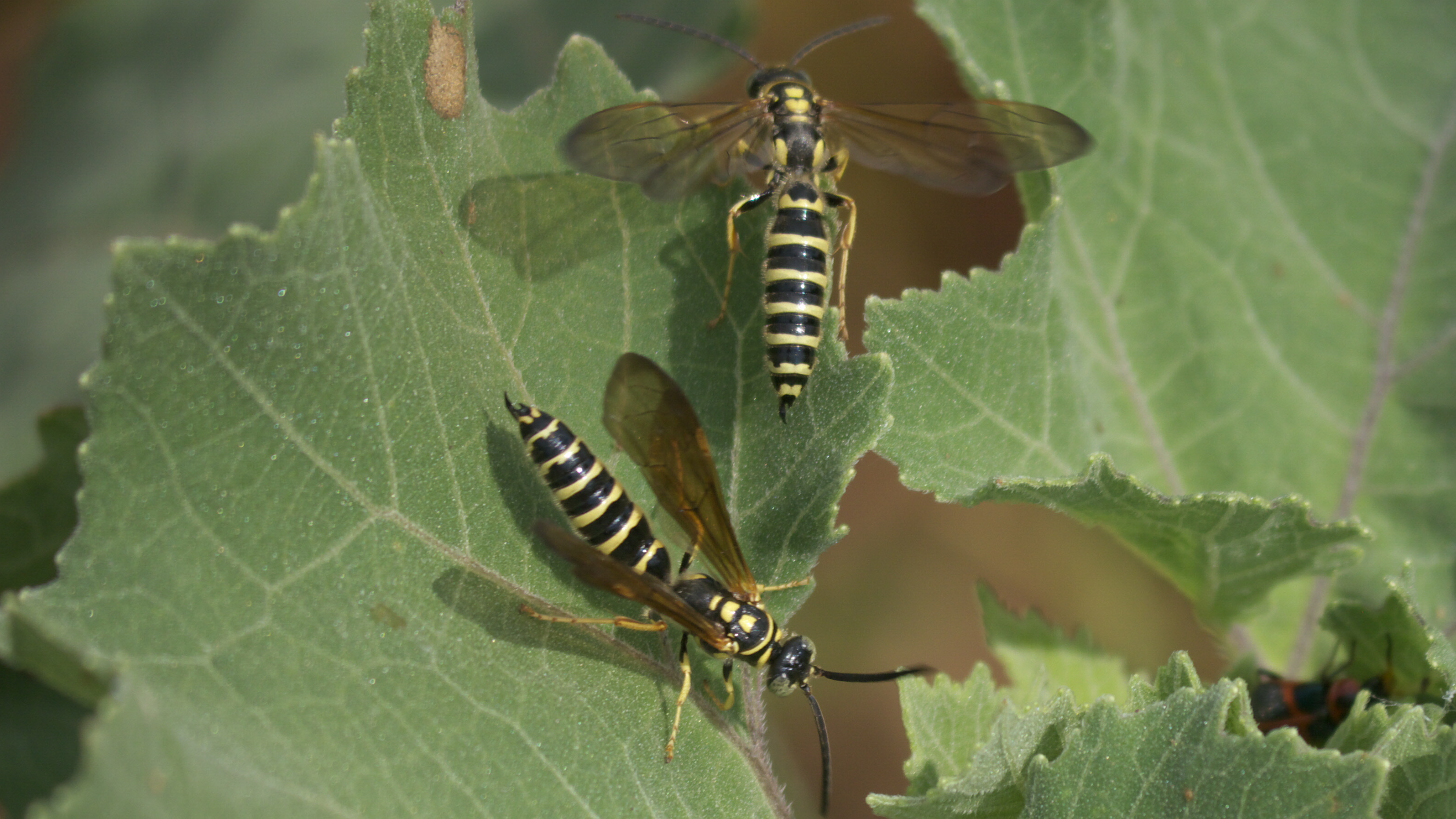|
Thynnoidea
Thynnoidea is a superfamily of hymenopterans in the order Hymenoptera. There are 2 families and hundreds of described species in Thynnoidea. Families These two families belong to the superfamily Thynnoidea: * Chyphotidae (chyphotid wasps) * Thynnidae The Thynnidae (also known as thynnid wasps, flower wasps, or thynnid flower wasps) are a family of large, solitary wasps whose larvae are almost universally parasitoids of various beetle larvae, especially those in the superfamily Scarabaeoidea. ... (thynnid wasps) References Further reading * * * External links * Apocrita Apocrita superfamilies {{Apocrita-stub ... [...More Info...] [...Related Items...] OR: [Wikipedia] [Google] [Baidu] |
Apocrita
Apocrita is a suborder of insects in the order Hymenoptera. It includes wasps, bees, and ants, and consists of many families. It contains the most advanced hymenopterans and is distinguished from Symphyta by the narrow "waist" ( petiole) formed between the first two segments of the actual abdomen; the first abdominal segment is fused to the thorax, and is called the propodeum. Therefore, it is general practice, when discussing the body of an apocritan in a technical sense, to refer to the mesosoma and metasoma (or gaster) rather than the "thorax" and "abdomen", respectively. The evolution of a constricted waist was an important adaption for the parasitoid lifestyle of the ancestral apocritan, allowing more maneuverability of the female's ovipositor. The ovipositor either extends freely or is retracted, and may be developed into a stinger for both defense and paralyzing prey. Larvae are legless and blind, and either feed inside a host (plant or animal) or in a nest cell prov ... [...More Info...] [...Related Items...] OR: [Wikipedia] [Google] [Baidu] |
Chyphotidae
The Chyphotidae are a family of wasps with wingless females similar to the Mutillidae, differing most visibly in the presence, in females, of a suture separating the pronotum from the mesonotum. These species are found primarily in arid regions in the southwestern United States and adjacent regions in Mexico. Taxonomy Recent classifications of Vespoidea ''sensu lato'' (beginning in 2008) removed two of the subfamilies formerly placed in the family Bradynobaenidae to a separate family Chyphotidae, thus restricting true bradynobaenids to the Old World, with chyphotids being restricted to the New World The term "New World" is used to describe the majority of lands of Earth's Western Hemisphere, particularly the Americas, and sometimes Oceania."America." ''The Oxford Companion to the English Language'' (). McArthur, Tom, ed., 1992. New York: .... The genera are classified as follows: Subfamily Chyphotinae * '' Chyphotes'' Blake, 1886 Subfamily Typhoctinae Tribe Eotil ... [...More Info...] [...Related Items...] OR: [Wikipedia] [Google] [Baidu] |
Hymenoptera
Hymenoptera is a large order of insects, comprising the sawflies, wasps, bees, and ants. Over 150,000 living species of Hymenoptera have been described, in addition to over 2,000 extinct ones. Many of the species are parasitic. Females typically have a special ovipositor for inserting eggs into hosts or places that are otherwise inaccessible. This ovipositor is often modified into a stinger. The young develop through holometabolism (complete metamorphosis)—that is, they have a wormlike larval stage and an inactive pupal stage before they reach adulthood. Etymology The name Hymenoptera refers to the wings of the insects, but the original derivation is ambiguous. All references agree that the derivation involves the Ancient Greek πτερόν (''pteron'') for wing. The Ancient Greek ὑμήν (''hymen'') for membrane provides a plausible etymology for the term because species in this order have membranous wings. However, a key characteristic of this order is that the hi ... [...More Info...] [...Related Items...] OR: [Wikipedia] [Google] [Baidu] |
Myzinum Quinquecinctum P1240895a
''Myzinum'' is a genus of wasps in the family Thynnidae. There are 63 species presently recognized in ''Myzinum''. They measure 7–24 mm. They parasitize white grubs (scarab larvae), including ''Phyllophaga ''Phyllophaga'' is a very large genus (more than 900 species) of New World scarab beetles in the subfamily Melolonthinae. Common names for this genus and many other related genera in the subfamily Melolonthinae are May beetles, June bugs, and J ...''. They are used as biological controls. Distribution ''Myzinum'' are found in New World and are most diverse in the Neotropics. North American species list The following 10 species occur in North America: * '' Myzinum carolinianum'' (Panzer, 1806) * '' Myzinum cocoritensis'' Kimsey, 2009 * '' Myzinum confluens'' (Cresson, 1865) * '' Myzinum dubiosum'' (Cresson, 1872) * '' Myzinum frontale'' (Cresson, 1875) * '' Myzinum fulviceps'' (Cameron, 1900) * '' Myzinum maculatum'' (Fabricius, 1793) * '' Myzinum navajo'' (Krombei ... [...More Info...] [...Related Items...] OR: [Wikipedia] [Google] [Baidu] |
Thynnidae
The Thynnidae (also known as thynnid wasps, flower wasps, or thynnid flower wasps) are a family of large, solitary wasps whose larvae are almost universally parasitoids of various beetle larvae, especially those in the superfamily Scarabaeoidea. Until recently, the constituents of this family were classified in the family Tiphiidae, but multiple studies have independently confirmed that thynnids are a separate lineage. Description Most species are small, but they can be up to 30 mm long. The females of some subfamilies ( Diamminae, Methochinae, and most Thynninae) are wingless and hunt ground-dwelling (fossorial) beetle larvae, or (in one species) mole crickets. The prey is paralysed with the female's sting, and an egg is laid on it so the wasp larva has a ready supply of food. In species where both sexes are winged, males are similar in size to the females, but are much more slender. The males of species with wingless females, however, are often much larger than the fe ... [...More Info...] [...Related Items...] OR: [Wikipedia] [Google] [Baidu] |


